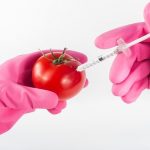In the USA, the approval of genetically modified (GM) bacteria or yeast involves a multi-step regulatory process primarily governed by agencies like the U.S. Department of Agriculture (USDA), Food and Drug Administration (FDA), and Environmental Protection Agency (EPA), depending on the intended use of the organism.
1. Regulatory Oversight
- USDA: Oversees GM organisms that might affect plants or plant health.
- FDA: Regulates GM microorganisms used in food, food additives, and pharmaceuticals, ensuring safety for human consumption.
- EPA: Manages organisms that may affect environmental health, especially if they produce pesticides or are used in bioremediation.
2. Steps in the Process
A. Research and Development
- The process begins with research, identification of the desired genetic modification, and preliminary laboratory and field testing (contained testing in labs and sometimes controlled environments).
B. Pre-market Review
- Consultation with FDA (Optional but recommended): The FDA encourages developers to engage in voluntary consultations early in the process to discuss the potential uses, risks, and safety assessments.
- Submission of Safety Data: Developers must submit detailed data about the GM microorganism, including its genetic makeup, function, safety tests, and potential impact on health and the environment.
C. Risk Assessment
- Agencies review the data for potential risks, including allergenicity, toxicity, environmental effects (like gene transfer to other organisms), and the stability of the genetic modification.
- This involves rigorous testing, including in vitro studies, animal models, and sometimes human trials for food products or drugs.
D. Environmental Impact Review (EPA/USDA)
- If the GM microorganism has the potential to impact the environment (e.g., through release or its use in agriculture), an environmental assessment (EA) or environmental impact statement (EIS) may be required under the National Environmental Policy Act (NEPA).
E. Approval Process
- Once the FDA or other agencies are satisfied with the safety profile, the microorganism can be approved for commercial use. This could involve a Generally Recognized as Safe (GRAS) determination for food-related products or New Drug Application (NDA) for pharmaceuticals.
F. Post-Approval Monitoring
- After approval, there may be ongoing monitoring requirements to ensure the GM microorganism behaves as expected and does not pose unforeseen risks to health or the environment.
3. Length of Time
- Research and Development: 1–10 years, depending on complexity and funding.
- Regulatory Review: Typically, 1–3 years after data submission, depending on the complexity of the GM organism and intended use.
- Total Time: From development to final approval, the process can take anywhere from 3 to 15 years.
4. Hurdles
- Scientific Complexity: Ensuring that the GM microorganism performs as expected without causing unintended effects can be challenging.
- Regulatory Scrutiny: Safety, environmental, and public health assessments are rigorous. Any concerns raised by the agencies could lead to delays.
- Public Perception: There may be public resistance to GM products, and addressing this through transparency, labeling, and communication strategies is often necessary.
- Cost: The process of developing and gaining approval for a GM organism can be extremely expensive, sometimes costing millions of dollars.
The process requires careful planning, compliance with regulatory guidelines, and thorough scientific testing.
Visited 31 times, 1 visit(s) today


Leave a Reply